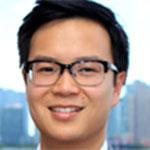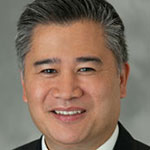For ophthalmologists who want to see patients and make cutting-edge discoveries that improve eye care and prevent blindness, becoming a clinician-scientist presents an ideal opportunity that lets you bridge the gap between medicine and science, regardless of subspecialty.
Three ophthalmologists, including two YOs, explain in detail how you can get started on this exciting career track.

Jeremy Lavine, MD, PhD
Assistant Professor of Ophthalmology
Northwestern University
YO Info: How has becoming a clinician-scientist fulfilled your young career?
Dr. Lavine: The reason that I became a clinician-scientist is long-term career satisfaction. Being a physician provides two important aspects to my career: first, short-term fulfillment from direct patient care, and secondly, long-term knowledge generation through scientific discoveries with hypotheses generated through firsthand experience of critical gaps in patient care and/or scientific knowledge. As a vitreoretinal specialist, we deal with acute problems like retinal detachments and chronic problems like diabetic retinopathy and macular degeneration. These patient encounters can be very rewarding but do not fulfill my long-term career aspirations. As a scientist, however, I can fulfill these long-term aspirations by addressing critical knowledge gaps or attempting to solve large problems, which can take years to decades. For many physicians or scientists, this might be frustrating, but in combination with shorter-term achievement from patient care, long-term scientific goals provide a balance to my career.
How can a young ophthalmologist get started down this path?
Dr. Lavine: The National Institutes of Health Career Development (K) awards provide support for senior postdoctoral fellows or faculty-level candidates. They were created to help young clinician-scientists establish themselves in research. The Mentored Clinical Scientist Development Award program (K08) is for basic science, and the Mentored Patient-Oriented Research Career Development Award (K23) is for clinical science. These K awards provide 50% to 80% protected research time (i.e., salary support).
The two most important aspects of obtaining K grants are: 1) your research proposal and 2) your mentorship plan. The K grants are training grants, so each specific aim is designed to not only answer a research question but also provide training for the awardee. At the end of each specific aim or sub-aim, it’s important to stress not only what successful completion of the aim will accomplish scientifically, but also how the aim will develop your career as the awardee and as an early career scientist.
The mentorship plan should describe the applicant’s background, the applicant’s career objectives, gaps in scientific training that the grant will address, the mentorship team of the applicant, and finally the educational and training activities that the awardee will take part in. It is ideal if a member of the K mentorship team has experience successfully transitioning a K awardee to R-level funding (R-level NIH grants are research grants for senior-level scientists). The mentorship plan and research proposal are 12 pages total; the mentorship plan should be four to six pages and research proposal six to eight pages. It is strongly recommended to use a previously funded National Eye Institute’s (NEI) K grant as a reference when preparing your own.
What are the best pearls for obtaining grants?
Dr. Lavine: The two most important pearls are your specific aims page and the potential pitfalls/alternative strategies section. The specific aims page must be comprehensive, concise and capable of standing alone. After reading your specific aims page, many reviewers will have already made a decision about your grant. Therefore, your specific aims page needs to provide the key background information, the gap in scientific knowledge that your aims will address and your approach to accomplish each specific aim. The greatest challenge is to accomplish this concisely within one page.
The potential pitfalls and alternative strategies section is the most intellectually challenging. It is not adequate to simply write that you have experience with this technique and anticipate no pitfalls. In putting together my K award, I attempted to address two pitfalls: one technical and one theoretical. A technical pitfall would be a change to your experimental approach that allows you to similarly perform an experiment like switching between complementary techniques. A theoretical pitfall is what happens if, after changing technique, you still cannot achieve your expected result because your hypothesis is wrong. If you can convince your reviewer that your grant still has merit in this event, then your chances of funding have grown considerably.

Edmund Tsui, MD
Assistant Professor of Ophthalmology
Stein Eye Institute
What do you enjoy most about being a clinician-scientist?
Dr. Tsui: A career as a clinician-scientist encompasses leading a research program as well as being an active clinician. Whether it be at the lab bench, translating discoveries from the lab to patients, or performing clinical research, there are many options for YOs to consider. Regardless of the modality of research, YOs engaged in research can help advance the field of ophthalmology. By performing research as a clinician-scientist, this will also lead to presentations about your research at conferences and publication of your work.
I personally enjoy a career as a clinician-scientist because it leads to a lot of variety during my week. In addition to caring for patients, my week is filled with lab meetings, data analysis and meetings with collaborators to discuss current and future projects. I am currently funded by a NEI K23, which protects 75% of my time for research, so I am in clinic about 25% of the time. This helps me dedicate my time for research and provides me with resources to obtain data, present my work, write manuscripts and apply for future grants.
What should YOs keep in mind when getting started in research?
Dr. Tsui: It’s important to figure out what type of research inspires and excites you. Some questions you should ask yourself include: How do you see this being incorporated in your career? Can there be synergy between your research program and your clinical focus? Where will you get funding? Luckily, you don’t have to answer these questions all by yourself. Be sure to talk to your mentors. They can offer perspectives and guidance and provide direction for your research program.
There are also different career paths within research: Will you be dedicating the majority of your time to research or will you be more clinically focused? This will determine how much time you will be able to focus on building your research program, and this also depends on the amount of funding you have. At the same time, you may also be involved in clinical trials — investigating the latest intraocular implant or surgical device or a new therapeutic.
Of note, research can be done in both the academic and private practice settings, although the time dedicated to research may vary in these settings. There are many resources through the Academy and also at the annual meeting that YOs can utilize to learn more about research and meet like-minded ophthalmologists. This includes a session held in the YO Lounge jointly sponsored by the Academy’s YO Committee and ARVO’s Member in Training Committee with pearls for YOs interested in a clinician-scientist career. Keep in mind you should continue to publish and present your research, since this will lead to more grants and collaborative opportunities.
What are your top pearls for obtaining grants?
Dr. Tsui:
1. Always be on the lookout for grants.
- Search for grants that suit your research and make note of their deadlines. Keep the deadlines organized on a calendar
- There are small foundation grants and also larger grants from the NIH. Be sure to apply for both types.
2. Reach out to mentors.
- Mentors can provide guidance and can review your grant proposal to provide additional perspectives.
- Your mentors have been through it all; they’ve likely seen many grant successes and failures. Their guidance and advice will be valuable.
3. Read others’ grants, and keep up with the literature.
- Reading grants, both successful and unsuccessful, can help you learn how to frame your research and how to best write your grant proposal.
- Ask mentors and colleagues for examples of successfully funded grants. The NIH website also offers examples of successfully funded grants.
4. Start the application process early, and don’t be afraid to edit and rewrite.
- You can never be too early in the writing process. Get something down on paper and revise it until you’re happy with it.
- Don’t forget to have your mentors and colleagues read over your grant.
- Sometimes having a perspective outside your research team helps as well.
5. Attend workshops and webinars on how to write grants.
- Through these workshops, you can learn about eligibility criteria, ask questions about the process and learn about all the components of a grant.
 R.V. Paul Chan, MD, MSc, MBA, FACS
R.V. Paul Chan, MD, MSc, MBA, FACS Chair, Department of Ophthalmology and Visual Sciences
The John H. Panton, MD, Professor of Ophthalmology
Director, Pediatric Retina and ROP Service
Illinois Eye and Ear Infirmary
Academy Secretary for Global Alliances
Why should YOs consider becoming a clinician-scientist?
Ophthalmology allows for so many career path options.. When considering our first jobs after completing residency or feIlowship, many of us think a lot about the path we want to pursue. It is important to ask ourselves what we want our lives to look like in the long run. For example, do you want to be a clinician, clinician-educator or clinician-scientist or take a position in industry? It’s often difficult to decide on that first job, and I’ll often ask younger ophthalmologists, “What are you passionate about?”
Fundamentally, becoming a clinician-scientist means embarking on a career where you can explore important questions that will advance science and patient care. Traditionally, when we think about being a clinician-scientist, we envision taking a position as full-time faculty at an academic medical center. But pursuing a career where you can participate in research isn’t just limited to university-based practice. Now, many private-practice groups have robust clinical research opportunities where young clinicians can continue their interests in research, technology development and education.
How can a young ophthalmologist get started down this path and get started in research?
Finding great mentors is critical for success as a clinician-scientist and gaining a solid foundation in research. As a young ophthalmologist, I was fortunate to have incredible mentors who not only guided me through specific projects, but also supported and provided me with opportunities throughout my career.
Connecting with potential collaborators and networking with peers are also important. Organizations like the Association for Research in Vision and Ophthalmology (ARVO) have many opportunities to connect with others who can provide guidance. Programs like the ARVO Global Mentorship Program and the ARVO Women’s Leadership Development Program have been outstanding for advancing the careers of young clinician-scientists. If you’re a resident, the Annual Heed Ophthalmic Foundation Residents Retreat is another terrific program aimed at preparing residents to pursue a career in academic ophthalmology. In addition, the Academy’s Minority Ophthalmology Mentoring program offers unique opportunities for medical students. Industry partners can also offer opportunities for those who are interested in clinical trials and new therapies and technology.
In the end, think about what interests you, investigate what has already been published and try and connect with others in the field who can help you explore the questions you want to answer. It’s also very important to keep an open mind, have a vision and try and find your niche.
What are the best pearls for obtaining grants?
Again, identifying mentors who can guide you is critical for obtaining grants. Early in your career, it’s important to find the right mentorship team that has complementary skills. You can pursue grants sponsored by the National Eye Institute (NEI) such as Mentored Clinical Scientist Research Career Development Awards (K08, K23 and K12). Also, ask your mentors and peers for advice on funding opportunities and have them review your grant applications. You should also talk to others to get feedback about the grant review process. In addition to the funding opportunities offered by the NEI, look within your university and local community for potential opportunities for smaller funding mechanisms and foundation grants — for example, Research to Prevent Blindness (RPB) and other organizations provide significant funding for young investigators.
I also recommend following the NEI on social media (@NatEyeInstitute and @NEIDirector) and subscribing to the NEI funding listserv, which lists funding opportunities.